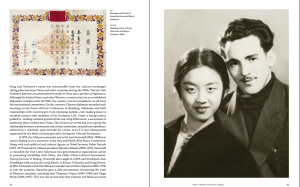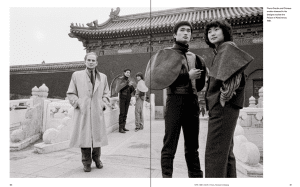Song Huai-Kuei (1937–2006), better known as Madame Song, was a Chinese artist, fashion icon and entrepreneur, instrumental in introducing China to the international fashion and lifestyle scene when the country was largely isolated from the rest of the world.
To shed a light on Madame Song’s multiple identities and influence, M+ has organised the special exhibition Madame Song: Pioneering Art and Fashion in China from 29 July to 14 April 2024.
To accompany the exhibition, Thames & Hudson has published the book Madame Song: A Life in Art and Fashion, in collaboration with M+.
Written by Pi Li, Head of Art at Tai Kwun Contemporary and former curator at M+, the book tells the multifaceted story of Madame Song, whose life spanned some of the most significant changes in the history of China.
Song overcame political, social, and artistic boundaries to connect East and West and transform China’s cultural landscape. She broke cultural barriers for love, became friend with writers, artists, fashion designers, filmmakers, and entrepreneurs. She introduced aspects of Western culture into the country and helped put in place traditional Chinese aesthetics worldwide.
Song studied at the Central Academy of Fine Arts in Beijing. In 1954, she met Bulgarian student Maryn Varbanov (1932-1989), who was part of the first group of exchange students allowed into post liberation China. Despite cultural adversity, Song and Varbanov married in 1956 and became the first mixed marriage in China.
In 1959, Song moved with her husband and daughter to Sofia, Bulgaria. In the next decade, the couple built a carrier as collaborating artists – Varbanov became a sculptor and tapestry artist.
In 1979, Song met Italian-French fashion designer Pierre Cardin at the International Contemporary Art Fair (FIAC) in Paris, where Varbanov was exhibiting his three-dimensional fabric sculptures. Cardin bought all sculptures for his personal collection, and became enamoured with Song’s energy and enthusiasm to return to China and to collaborate with him.
For the next 30 years, Song was Cardin’s business muse. In the 1980s, she moved back to Beijing and helped him establishing the Cardin fashion brand in China, organising the first runway shows in the country. Song would choose young men and women from the Beijing streets and turned them overnight into fashion models!
Song also helped Cardin to launch his restaurant Maxim’s in Beijing, welcoming celebrities, international movie producers and actors, fashion industry people, as well as China’s political and social elite.
In 1987, the filmmaker Bernardo Bertolucci was an “habitué” of the restaurant when he was in Beijing filming his epic biopic The Last Emperor. He gave Song the role of the mother of Pu Yi, the last emperor.
Through archives, photographs, notebooks, artworks, and a narration from many perspectives, the book highlights the extraordinary life story of Madame Song, following the arc of 20th-century history. The book also features the many iconic Cardin outfits donated by Madame Song’s daughter to M+ for the exhibition.
Madame Song: A Life in Art and Fashion is an essential read for anyone interested in the recent history of visual culture, especially in Asia. It is also a comprehensive and vivid portrait of a woman who broke cultural, political and artistic barriers.
Madame Song: A Life in Art and Fashion, by Pi Li, published by Thames & Hudson
270 x 205 mm , 288 pages, HKD 480
Format: hard cover
Language: English
Also available in Chinese.
Leave a Reply Cancel reply
You must be logged in to post a comment.





